Anaesthesia and Surgery
Here at Totally Vets, we are performing anaesthesia, sedation, and surgery every day.
The procedures we perform range from:
- Very routine, such as desexing (spays and neuters)
- More specialised like dentistry and orthopaedics
- Very complex surgeries involving ligaments, organs, or reconstructions
We have a team of highly skilled and experienced veterinarians, nurses and technicians with many years of clinical experience, so you can be confident we will take the best possible care of your pet.
We understand there can be a lot of questions around surgery and anaesthesia, so we have put together some frequently asked questions below.
If you have any questions about your pet’s surgery, please don’t hesitate to give us a call. We are happy to help!
FAQ's
What is the difference between sedation and anaesthesia?
Sedation and general anaesthesia are similar, but are used for different purposes.
Sedation is used to calm and relax the patient so we can carry out procedures such as X-rays, ultrasounds, or wound care that require your pet to be very still.
When combined with additional analgesia (pain relief), we are often also able to perform minor surgical procedures, like skin biopsies or suturing small wounds.
Your pet is sleepy and relaxed during sedation, but not unconscious.
We can perform minor surgery on your pet when they’re sedated by using a local anaesthetic to numb the area so they don’t feel pain where we are working.
General anaesthesia is a state of controlled unconsciousness.
This allows us to perform longer and more complex surgical procedures, or procedures that can’t be done while your pet is awake like endoscopy (using a camera to view inside the body). Your pet is continually monitored whilst under anaesthesia and medications are adjusted as necessary to keep them unconscious (just like human surgery).
Your pet is NOT awake or aware during anaesthesia. They are completely unconscious and feel no pain.
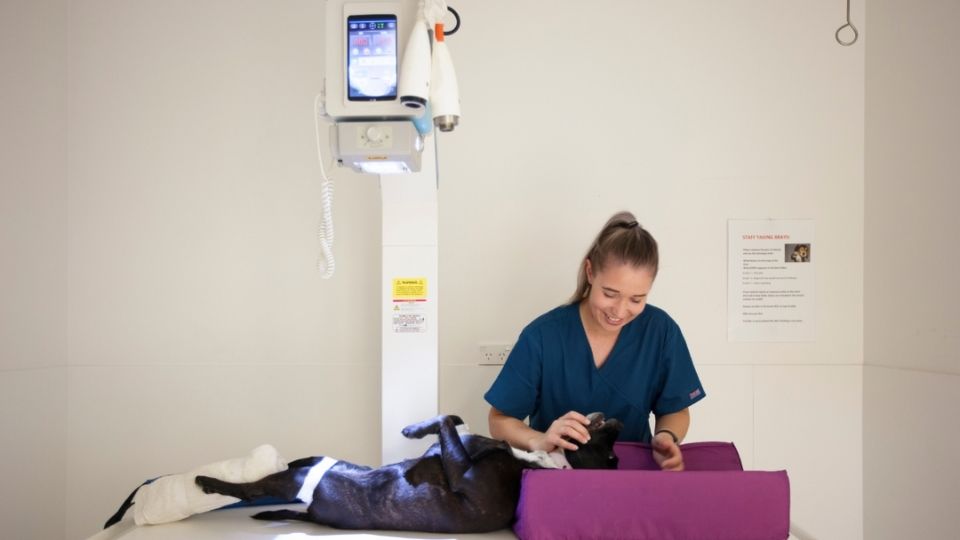
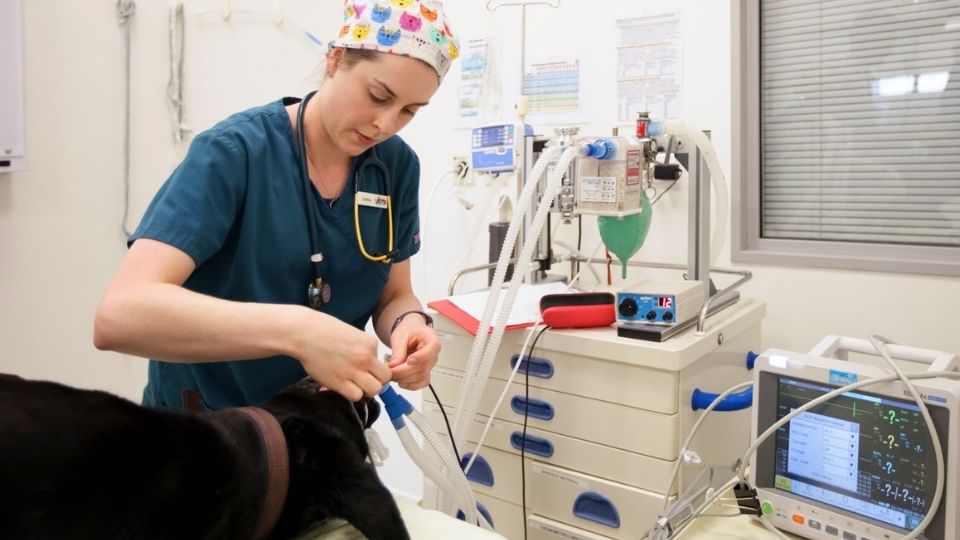
Is anaesthesia safe?
All general anaesthetics and sedations do pose some risk; but thanks to continuous advancements in both human and veterinary medicine, anaesthesia is considered very safe.
The drugs we use for anaesthesia temporarily suppress a patient’s central nervous system to create a state of what we call controlled unconsciousness to perform surgery.
The effects of these drugs can also reduce blood pressure, change the heart rate and rhythm, and affect breathing. These changes are normal and expected; they are closely managed by your veterinary team.
The main concern with any anaesthetic is an unexpected or severe reaction (what we call an adverse event) while under anaesthesia.
Each patient is carefully assessed by our team before surgery, and an appropriate anaesthetic plan is developed to reduce this risk.
All patients that undergo anaesthesia at Totally Vets are closely monitored by a dedicated, qualified, and trained veterinary nurse throughout their entire procedure, along with the use of a range of monitoring equipment.
While the risk of complications under sedation or anaesthesia is very low certain factors can increase this risk; including:
- Age: Very young or older animals may have underdeveloped or compromised organ function. This makes them more susceptible to the effects of anaesthesia, and this can come with a greater risk of an adverse reaction.
- Weight: Being overweight or severely underweight can lead to complications during surgery. These complications can include problems with their breathing and the way their bodies absorb and process the anaesthetic drugs.
- Breed: Certain breeds, such as brachycephalic dogs and cats (ones with short snouts / flat faces), are at an increased risk of regurgitation (vomiting) or respiratory (breathing) complications under or post-anaesthesia. Some breeds are also more susceptible to genetic conditions, which can affect their ability to metabolise (process) certain medications.
- Underlying illnesses: Some diseases or illnesses can increase the risk of adverse reactions, especially during longer anaesthetics.
All animals are thoroughly assessed by a veterinarian prior to anaesthesia and surgery. These factors above form part of the anaesthetic plan.
Any specific concerns will be discussed with you beforehand.
What about pre-anaesthetic blood testing?
Our veterinary team may recommend or require pre-anaesthetic blood testing prior to surgery.
This is a blood test that checks parameters such as electrolytes, blood cell count, liver and kidney values. The liver and kidneys play a very important part in how anaesthetic drugs are processed in your pet’s body, so any abnormalities may change the anaesthetic plan.
The blood test is processed by our in-house lab, so results come back to us quickly.
For young, healthy patients, the pre-anaesthetic blood testing is usually optional. However, for older patients or patients with a pre-existing condition we may strongly recommend this be performed.
Some patients may also require more extensive blood testing and diagnostics before we can proceed with surgery.
Your veterinarian will discuss this with you if they think it’s required.
How is my pet kept asleep during their surgery?
An intravenous catheter (an IV Line) is placed for all patients undergoing a procedure. This allows us to administer anaesthetic drugs, fluids, pain relief, and emergency medication if needed. This is usually placed in their foreleg (their front leg). We shave a small patch on their leg to do this.
An endotracheal tube is also placed into their trachea (windpipe) once they are asleep if they are undergoing general anaesthesia.
This tube allows us to deliver oxygen and anaesthetic gas to keep them asleep.
It also protects their airway from aspiration should they vomit or regurgitate under anaesthesia, and allows us the ability to manage their breathing if necessary.
How is my pet monitored under anaesthesia?
Every patient is given a dedicated veterinary nurse who will be with them throughout their procedure, monitoring and adjusting their anaesthetic as necessary.
We have a range of monitoring equipment and machines used to assess vital signs and anaesthetic depth during general anaesthesia. We monitor heart and respiratory rate/rhythm, oxygen saturation, blood pressure, and temperature.
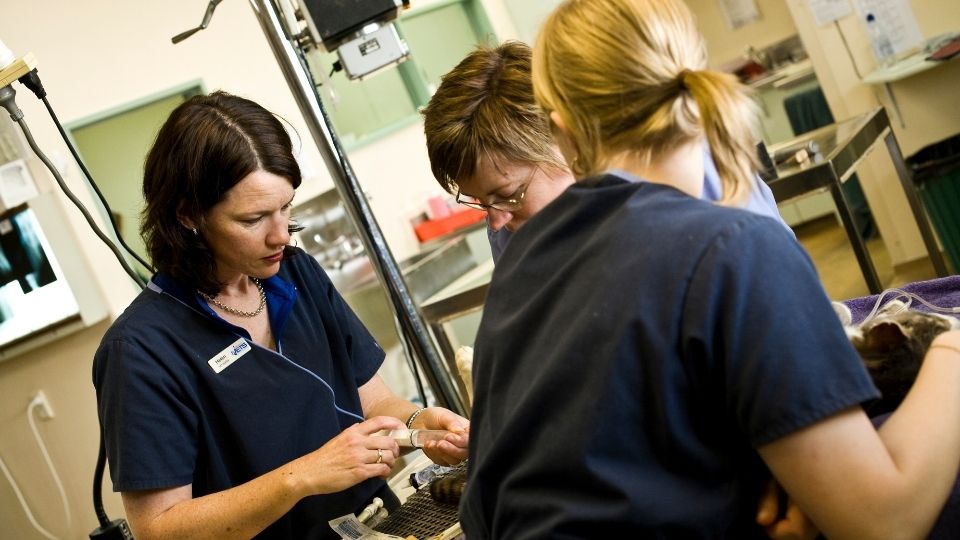
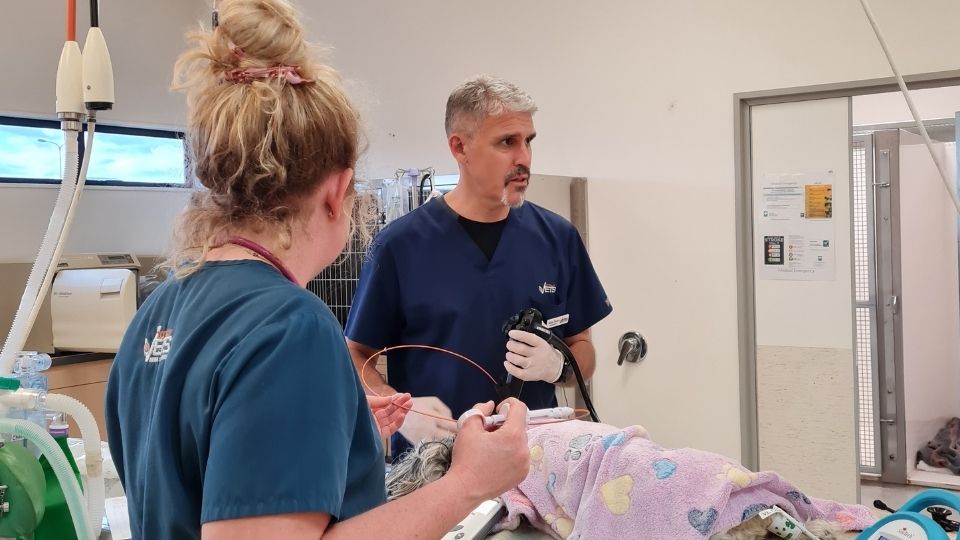
What risks are involved with surgery?
The risks of surgery vary greatly depending on the procedure and individual patient considerations. Your veterinarian will discuss the specific risks for your pet’s procedure with you prior to surgery.
Some common side effects include:
- Mild irritation or inflammation: Some mild swelling, bruising, redness and itching around the incision is very normal and can be expected.
- Discomfort: All patients receive pain relief before during and after surgery. Additional pain relief may also be provided for you to give at home – this will come with instructions on how and when to give it. Some discomfort after surgery is normal, however, your pet should not appear to be overly in pain.
- Seroma or haematoma: A seroma is a collection of clear fluid under the skin. A haematoma is a collection of blood under the skin. This often looks like a bruise or a lump. These are usually straightforward and resolve on their own. If they cause discomfort or delay wound healing they may require assessment by a veterinarian.
Some less common complications include:
- Infection: We take many precautions to prevent infection. We use sterile operating theatres, sterile instrumentation, and we wear appropriate surgical attire. Bacterial infections are not common, and antibiotics aren’t routinely prescribed unless there are any concerns. While we do our best to avoid infection, there is always a risk involved with any surgery.
- Haemorrhage: Though we do our best to prevent and control any haemorrhage (bleeding) during surgery, unexpected bleeding can still occur. This could result in mild to severe blood loss. Mild discharge from the wound after surgery is normal. Excessive oozing, active bleeding or an increase in swelling should be assessed by a veterinarian. Being too active during recovery and before the wound has healed can increase the risk of haemorrhage and wound breakdown.
- Delayed healing or wound breakdown: Animals that are too active, or lick or chew at their wounds are more likely to experience bleeding, infection, delayed healing, and wound breakdown. This often requires further treatment to fix. We recommend using an Elizabethan collar (aka the ‘cone of shame’) to prevent your pet from bothering their wounds. We will let you know if your pet should have an Elizabethan collar to protect their wound.
- Suture reaction: Sometimes suture material (the stitches we use to close the incision) can cause an inflammatory response or they may not hold as intended. This can lead to swelling, discomfort and wound breakdown. If this occurs we may need to examine and re-suture the surgical site.
- Procedure outcomes: Despite all best efforts, not all procedures go as planned and the underlying condition may not be fully resolved. Additional treatment or follow-up care may be necessary.
If you have any concerns during your pet’s recovery, please don’t hesitate to contact us.
Our team will assess whether you can continue to monitor at home, or if a recheck in clinic is recommended.
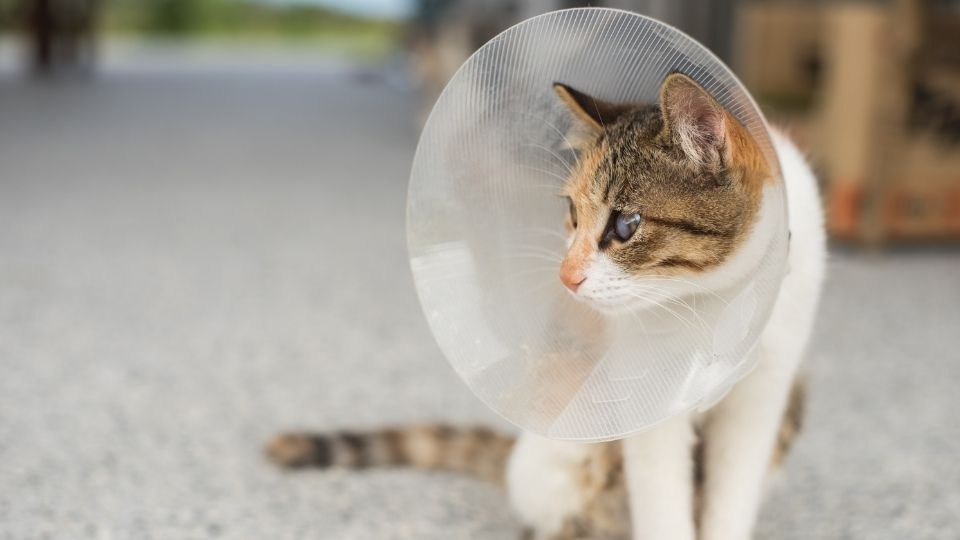
Why do I have to stop feeding my pet before surgery?
Animals (and humans) are fasted prior to anaesthesia. This is done to reduce the risk of vomiting and aspiration (inhalation of stomach contents into the airway).
The fasting period is generally around 8 hours before their procedure. We will let you know beforehand when to remove your pet’s food.
In some cases, we may require or allow your pet to have a small amount of food before their anaesthesia, such as diabetic and very young animals.
We will let you know if this applies to your pet.
What should I expect after anaesthesia/surgery?
After surgery, we will monitor your pet and put them in our recovery area. We will call you and let you know when your pet will be ready for discharge.
When you arrive to pick up your pet, a veterinary nurse will go over your pet’s procedure, any complications to be aware of, and instructions on how to care for your pet throughout their recovery.
We will also let you know if your pet requires a follow-up appointment with our nursing team to check how they are healing. If they do require a follow-up visit we will book this in with you before you take your pet home.
Some common and temporary side effects of anaesthesia can last for 12-48 hours and include:
- Mild cough or irritation of the throat: This is a common side effect which is due to the tube placed down the windpipe. Symptoms usually resolve on their own within 24 hours.
- Drowsiness or lethargy: Anaesthetic medication can cause grogginess that lasts up to 48 hours. Your pet may be a bit quieter than usual but should slowly start improving as the anaesthetic wears off. We recommend keeping them in a quiet place for 24 hours after their procedure.
- Reduced appetite: Anaesthetic medication can cause nausea. Some pets may eat less, some not at all, or some may vomit after eating for a day or two following surgery. We recommend giving them small light meals. Keep to their normal diet and avoid giving them new foods during this time.
- Mild gastrointestinal upset: Some vomiting, diarrhoea or constipation may occur after anaesthesia. This is usually due to the fasting period before the procedure or the effects of anaesthetic medication. Symptoms usually resolve within 24 hours. If they are severe or persist longer than a day please contact the clinic for advice.
- Fluctuations in body temperature: Patients, especially smaller pets may lose body heat while under anaesthesia. To minimise this we use warming aids during and after the procedure. Your pet’s ability to regulate body temperature may still be affected post-surgery. Keeping them warm, dry, and comfortable for the first 24 hours after their procedure will help to support their recovery.
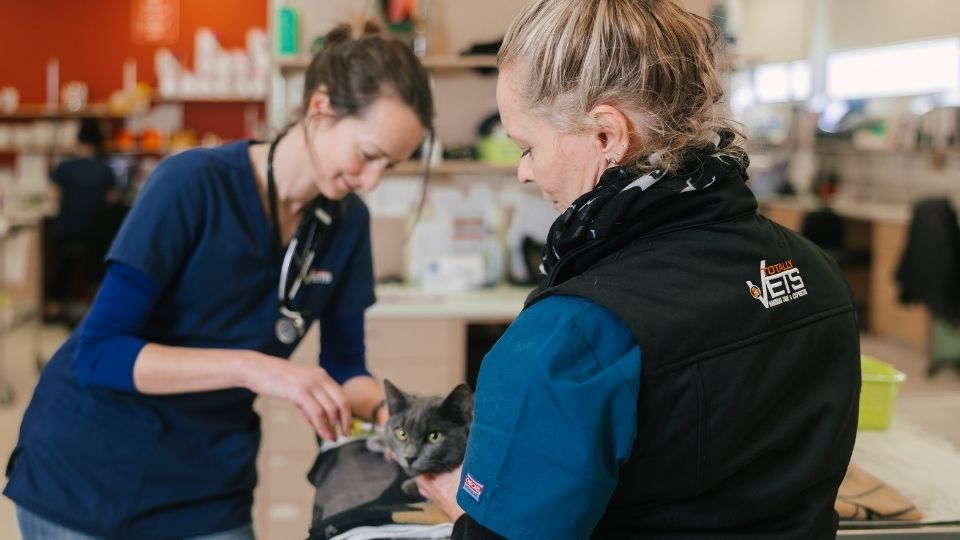
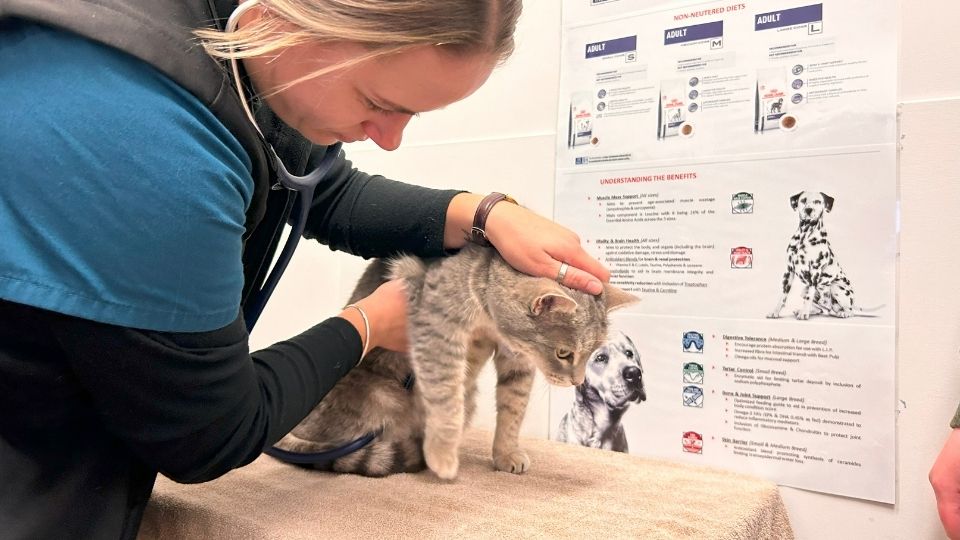
Post-operative check-ups with our nursing team
Before your pet undergoes surgery or anaesthesia, it’s important you understand the potential risks, expected outcomes and costs involved.
Our team is here to help guide you through this process and answer any questions you may have.
If you’re unsure about anything, please don’t hesitate to ask.